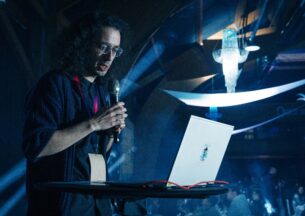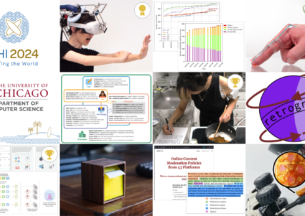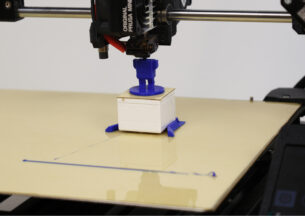Edge Computing Strategy from UChicago CS Student Wins RTAS Outstanding Paper
The world is increasingly instrumented with sensors deployed in cities, farms, remote wilderness, and beneath the ocean, collecting information for science, government, and business. As these sensors grow more sophisticated, they are expected to not only collect data, but also process it, using advanced machine learning to make preliminary inferences before beaming information back to a central hub. But because these sensors often run on batteries and renewable energy such as solar panels, they must be stingy with the amount of energy they dedicate to these power-hungry tasks.
In work that received an Outstanding Paper award at the 2021 IEEE Real-Time and Embedded Technology and Applications Symposium (RTAS), UChicago CS PhD student Tejas Kannan and Associate Professor Henry Hoffmann described a new strategy for sensors balancing these energy constraints and advanced recurrent neural network (RNN) systems. Dubbed Budget RNNs, the approach dynamically adjusts to variable energy environments without sacrificing the accuracy of data collection and processing, allowing low-power sensors to perform efficiently without human intervention.
“Because recharging is so dependent on the environment, there are periods in which there's no available energy, and the system must survive on battery power alone,” Kannan said. “And since the amount of energy available depends on the environment, the actual budget is something you can't necessarily plan for at design time. So what we wanted to do was develop a system that could perform on-device inference, maintaining high accuracy while also elongating the system to meet any of these variable energy budgets.”
Under ideal conditions — for example, when it is plugged in to a reliable power source — a sensor can collect data as frequently as its owner desires. But for sensors placed at the top of a tall bridge or in a remote forest, that kind of consistent power flow can’t be relied upon. So sensors need to make tough choices when external power drops or batteries run low: sample less data, skimp on data processing, or transmit less frequently.
Engineers attempt to find the right balance of these trade-offs by using recurrent neural networks, which are well suited to processing data sequences of variable lengths — precisely what sensors sampling data at different rates produce. But these networks are hungry for energy and memory themselves, and require significant training time before deployment. Anticipating every possible energy budget in the field and training and installing an RNN for each scenario can quickly overwhelm a low-cost sensor or require larger, more expensive batteries or storage.
By contrast, the Budget RNN approach designed by Kannan and Hoffmann requires only two RNNs: one that runs at max power when the battery is full and energy is abundant, and another that adapts dynamically to lower energy budgets. The latter design uses a leveled architecture that allows for early exits when energy is low, shrinking the neural network to fit the current environment. When combined with an adaptive sampling approach — under tighter energy constraints, the sensor collects fewer readings — the strategy can preserve accuracy at lower energy levels, allowing the sensor to fulfill its function even in unpredictable states.
“It's really geared towards the idea of sensors being out there without having human intervention for long periods of time,” Kannan said. “Here, we can basically plan for the average case and the system will adapt accordingly with not too much of a loss in its performance.”
The solution could even help low-cost sensor technologies that don’t use connected power or batteries at all, relying entirely upon the energy they can harvest from sun, wind, or other renewable sources. Beyond sensors, the approach could also be useful for smartwatches and other wearable technologies, which would like to maximize computing power without resorting to bulky batteries or memory storage.
But some challenges remain. Currently, Kannan is exploring the privacy implications of budget RNNs and similar dynamic approaches, which might allow uninvited observers to decode information from the variable power consumption of the device.
“The work we've done here is really concerned with energy efficiency and energy constraints, but I think there's a variety of things we could try, building on this idea,” Kannan said. “I’m interested in developing applications to improve the efficiency, practicality, and usefulness of low-power sensing technologies.”













